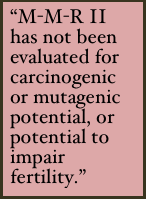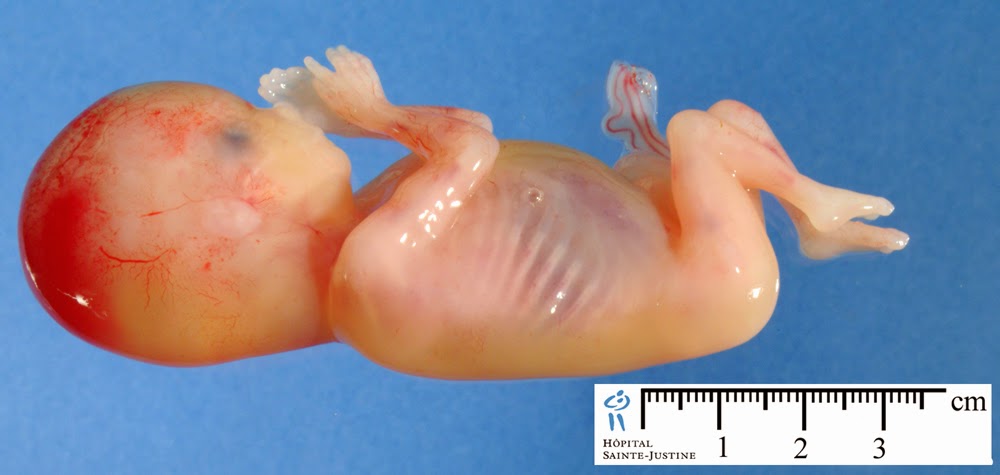The short factual answer is, YES.
Babies were specifically harvested from their mother’s wombs to provide living human cells as a desirable growth medium for vaccine development in the 1960s. Furthermore, the end product produced today contains some of the actual human DNA fragments used in the development of these products because it is impossible to fully purify a vaccine from all the human cellular debris. The DNA fragments are injected into the body with the rest of the components of the vaccines.
It’s true. While vaccines are pushed as a way to prevent infectious illness in children, most people are not aware that many vaccines are built on aborted human fetal tissue. Furthermore, parents are not told that this ‘preventative measure’ is known to kill some and harm countless numbers of others.
The rubella vaccine was the first vaccine derived from aborted human fetal cells. The rubella vaccine was added as the “R” to the MMRII licensed for use in 1979. This vaccine, exclusively used in the USA and used widely throughout the world, contains both RA27/3 cells (congenital rubella virus derived from an aborted baby) and WI-38 the first cell line used as a growth medium in vaccine development, derived from lung cells harvested from an aborted female baby.
MRC-5, the name of a second cell line used in vaccine development was developed in the U.K. using lung fibroblast cells from a male baby aborted at 14 week gestation (the size of the photo at the top of the page) for ‘psychiatric reasons’. Sometimes referred to as “human diploid cells,” MRC-5 is used in the manufacture of many vaccines, including Pentacle vaccine (since 2008), Hepatitis A and A/B combination vaccines (since 1995), polio vaccine (Poliovax, 1987), and shingles vaccine for adults (2006).
In 1995 Varivax, manufactured by Merck, targeting the varicella or chicken pox virus, derived from aborted human fetal tissue was approved for the USA market and added to the Advisory Committee on Immunization Practices (ACIP) schedule. This vaccine was developed using both WI-38 cells harvested from a female baby, and MRC-5 cells harvested from the lung fibroblast cells of a 14 week gestation male baby.
Havrix, a Hepatitis A vaccine, propagated in human fibroblasts from the MRC-5 line was approved for use in limited populations groups in 1996. In 2005 ACIP expanded the recommendation for the Hepatitis A vaccine to include all babies in the USA. [1]
“Pentacel® contains inactivated polio viruses grown on the MRC-5 human fetal cell line. Since 2008, Pentacel® is recommended for children at 2, 4 and 6 months of age, and may account for the recent idea that scientists have become more adept at diagnosing autism at younger age. Diagnosis at younger age may more likely be the result of introducing human fetal cell vaccine contaminates to younger children.” [2]
Even today, the CDC confidently describes the rubella vaccine in their pink book:
“The RA 27/3 rubella vaccine is a live attenuated virus. It was first isolated in 1965 at the Wistar Institute from a rubella-infected aborted fetus. The virus was attenuated by 25–30 passages in tissue culture, using human diploid fibroblasts. It does not contain duck, chicken or egg protein.” Previous rubella versions contained duck embryo, dog kidney or rabbit kidney cells. [3]
 The scientists were not concerned about the possible long-term impact of injecting foreign human DNA into a developing baby. The vaccine package insert for this vaccine continues to state, nearly 40 years later, “M-M-R II has not been evaluated for carcinogenic or mutagenic potential, or potential to impair fertility.” [4]
The scientists were not concerned about the possible long-term impact of injecting foreign human DNA into a developing baby. The vaccine package insert for this vaccine continues to state, nearly 40 years later, “M-M-R II has not been evaluated for carcinogenic or mutagenic potential, or potential to impair fertility.” [4]
Surely, in 40 years there has been ample time to study how this vaccine, containing human DNA fragments, could be impacting those that are injected with it.
It has been suggested that there was only one abortion that provided the tissue necessary to produce the cell lines used in vaccine development. This is a side issue. But, a closer look reveals that a total of at least 80 separate, elective abortions recorded were involved in the research and final production of the present day rubella vaccine: 21 from the original WI-1 through WI-26 fetal cell lines that failed, plus WI-38 itself, plus 67 from the attempts to isolate the rubella virus. https://cogforlife.org/vaccine-abortions/
As a further attestation to the reality of the scientific use of aborted human fetal tissue, it is noted that these cells lines are still available to purchase on-line today:
RA27/3 congenital rubella virus infected cells: https://www.atcc.org/Products/All/VR-1359.aspx
WI-38 human female fetal lung cells: https://www.atcc.org/Products/All/CCL-75.aspx
MRC 5 cell line male lung fibroblast cells: https://www.atcc.org/products/all/CCL-171.aspx
WHAT IS THE IMPACT of injecting human DNA into our BABIES???
See the next blog….
The previous blog in this series examines the choice we make in using vaccines as a ‘preventative measure’.
 Author: Becky Hastings, wife, mother, grandmother, passionate follower of Jesus and truth. As a breastfeeding counselor for over 25 years, Becky is devoted to helping parents make wise decisions for the long-term health and wellbeing of their babies. As a member of a Vaccine Safety Education Coalition, Becky writes and speaks on the topic of vaccine safety. Becky also loves mountain biking and appreciates donations which mainly encourage her.
Author: Becky Hastings, wife, mother, grandmother, passionate follower of Jesus and truth. As a breastfeeding counselor for over 25 years, Becky is devoted to helping parents make wise decisions for the long-term health and wellbeing of their babies. As a member of a Vaccine Safety Education Coalition, Becky writes and speaks on the topic of vaccine safety. Becky also loves mountain biking and appreciates donations which mainly encourage her.
[1] Hepatitis A is manufactured by both Merck and GSK and was first approved in 1996 for limited population groups. “To produce each vaccine, cell culture-adapted virus is propagated in human fibroblasts, purified from cell lysates, inactivated with formalin, and adsorbed to an aluminum hydroxide adjuvant.” The GSK version also has a preservative, 2-phenoxyethanol. https://www.cdc.gov/vaccines/pubs/pinkbook/hepa.html
[2] Impact of environmental factors on the prevalence of autistic disorder after 1979. Theresa A. Deisher*, Ngoc V. Doan, Angelica Omaiye, Rumiko Toyama and Sarah Bwabye, Sound Choice Pharmaceutical Institute, 1749 Dexter Ave N, Seattle, WA 98109, USA.Received 13 May, 2014; Accepted 9 July, 2014 http://soundchoice.org/scpiJournalPubHealthEpidem092014.pdf
[3] CDC description and history of rubella vaccine https://www.cdc.gov/vaccines/pubs/pinkbook/rubella.html
[4] Complete vaccine package insert for the MMRII https://www.fda.gov/downloads/BiologicsBloodVaccines/UCM123789.pdf

